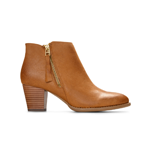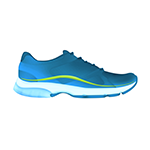
Orthotics FAQ's
What exactly is a foot orthotic?
A foot 'orthotic' is a device designed to restore your natural foot function. Many 'biomechanical' complaints such as heel pain, knee pain and low back pain are caused by poor foot function. (Biomechanics, the science of movement, studies the body's movements during walking, running and sports). Orthotics help realign the foot and ankle bones to their neutral position, thereby allowing you to reclaim your natural footprint. In turn, this can help alleviate problems in other parts of the body. In addition, orthotics give a more even weight distribution, take pressure off sore spots (e.g., the ball of the foot, corns in between toes, bunions, etc.) and they provide some shock absorption.
What is the difference between a foot bed or insole and a foot orthotic?
Regular foot beds are designed to provide a cushioning effect and absorb shock. They may feel comfortable at first, but they do not address the biomechanical cause of 'excess pronation.' Orthotics provide some degree of shock absorption, but more importantly they are functional and are designed to help you reclaim your natural footprint. Some foot beds also feature an arch support; however, quality orthotics such as Orthaheel do a lot more than just support the arches.
What are orthotics made of and how long will they last?
Traditional orthotics are made from rigid materials, such as hard plastic or even metal. Although they provide correct alignment, they are very hard to get accustomed to and limit the foot's natural suspension mechanism. Having something rigid under the foot means that with every step the impact is not being absorbed properly and a shockwave travels from the foot all the way up the spine. Vionic orthotics and sandals are made of a flexible material called EVA (ethyl vinyl acetate). The key advantage of EVA is that it is supportive and 'giving' at the same time! As you apply weight to the foot, there is a certain amount of 'give' in Vionic orthotics and sandals, providing shock absorption to the feet, ankles, knees, hips and back. This makes the device much more comfortable and more natural compared to hard orthotics. Yet, at the same time, they are firm enough to realign the foot and allow you to claim back your natural footprint. Because Vionic orthotics and sandals are somewhat flexible, they will need to be replaced every 12-18 months. Older people or those with sensitive feet will benefit from a softer type of orthotic such as Vionic, as they may have difficulty tolerating anything hard under the foot.
Who can benefit from wearing orthotics and why?
Any person with a foot problem can benefit from wearing orthotics. It is estimated that over 70% of the population suffer from rolling inwards of the foot and fallen arches ('excess pronation'), which is the major contributing factor to foot problems. As we get older this problem often worsens. Those over 50: As we get older, the muscles and ligaments in the foot become weaker, as do the bones due to calcium reduction. In addition, the fatty padding under the foot thins out, which means less protection and cushioning for the bones, in particular the heel bone. Fallen arches combined with thinning fat tissue are a recipe for foot problems. Heel Spurs are the most common foot complaints for those over 50. People who are on their feet all day: Factory workers, nurses, teachers, people in retail and many other industries are required to stand on their feet for hours each day. Hard, unforgiving surfaces like concrete and asphalt take their toll after prolonged standing even for young and healthy people! Most common complaints are tired, aching feet and legs as well as low back pain. Women who are required to wear dress shoes with heels (e.g., in retail or hospitality) often suffer from pain under the ball of foot (Metatarsalgia) and/or aching legs. Runners & athletes: Because athletes put so much strain on their muscles and bones and ground reaction forces are much higher (up to 4 times the body weight), biomechanical injuries are more rule than exception. Orthotics play a major role in preventing sports injuries such as Achilles Tendonitis, shin splints and problems in and around the knee joint. Plus, running pain-free enables any athlete to perform better! High-heel wearers: Most women know that high heels are not good for their feet, however many women do wear them. Common symptoms occurring from wearing high heels are pain in the back of the legs (and shortening of the calf muscles over the long term!), ball of foot pain, pain under the arch and the heel. Vionic Slimfit orthotics are specifically designed to reduce discomfort associated by heeled shoes and sandals. Pregnant / overweight people: Excess weight worsens the effects of excess pronation and its related pains. Proper alignment and support are crucial for those carrying additional weight, which creates additional forces on the feet, ankles, knees and back.
What pains and ailments can be aided by orthotics?
Most foot conditions respond favorably to orthotic treatment. Foot orthotics are found to be very effective for foot complaints such as bunions, calluses & corns, heel pain, Achilles tendonitis, Morton's Neuroma and ball of foot pain. Because the feet are the foundation of our body, orthotics can also provide natural, lasting relief for back pain, knee pain and shin pain. The sandals are especially good to keep beside the bed and slip on before you stand up each day. This can relieve morning heel pain or "plantar fasciitis."
What are shin splints?
Shin pain referred to as shin splints is a common term for pain occurring in the front and/or inside section of the shin bone (tibia). Anterior (front) shin splints are often experienced by new runners or walkers when pain occurs in the muscles at the front of the shin during exercise. Posterior shin splints (inside shin pain) are a more chronic condition occurring along the inside edge of the shin bone (tibia) and is generally seen with more active sports. Both conditions are related to excess stretching (traction) of muscles and tendons along the shin (tibia and fibia) bones. Vionic may help reduce excess stretching (traction) of the front and back leg muscles (commonly called Anterior Tibalis and Posterior Tibalis muscles) by utilizing the patented “angular restraining mechanism” in the heel section, thereby relieving this common pain. Please see the video below for more information and please visit the Aches & Pain section of our site that helps explain other common pains.
What is Plantar Fasciitis?
We're often asked about Plantar Fasciitis or Heel Pain. Below you will find information on this topic as well as a video explaining Plantar Fasciitis given by our founder, Phi Vasyli. Vionic shoes for heel pain relief: If you have heel pain, this description may sound all too familiar. What is the source of sore heels? Injury, disease and excess weight are among the possible culprits. But more often, back of heel pain results from poor biomechanics, often made worse by unsupportive shoes. Heel pain may become so severe for some that just putting weight on their feet first thing in the morning is excruciating. Walking or running may feel completely out of the question. How Heel Pain Develops: If your foot pronates too much, the ankle rolls too far downward and inward with each step. This can cause the arch to collapse and muscles and supporting structures to overstretch and lengthen. The ligaments running from the heel to the toes become strained, often leading to inflammation along the bottom of the foot. This inflammation and heel pain is known as Plantar Fasciitis. In response, the bone may also develop a bony growth (heel spur), right in the center of the heel. This too causes heel pain and can prevent an individual from walking with ease. The best shoes for heel pain (plantar fasciitis): By wearing orthotic shoe inserts or shoes for sore heels, plantar fasciitis, etc., you can align your feet and improve body posture. Extra arch support and realignment of the lower leg to its natural angle reduces the pulling and strain on the plantar fascia. This can take away a common cause of heel pain. Vionic technology is shown to help reduce over-pronation and associated conditions. Its award-winning technology is built into a selection of walking shoes and sandals. Whether you suffer from back of heel pain (plantar fasciitis), other lower leg pain, or are simply looking for a comfortable and supportive shoe, our podiatrist designed technology provides the support you need to feel relief and well-being with every step. Contact the experts at Vionic for technology that offers improved comfort, and provides pain relief for your daily living.










